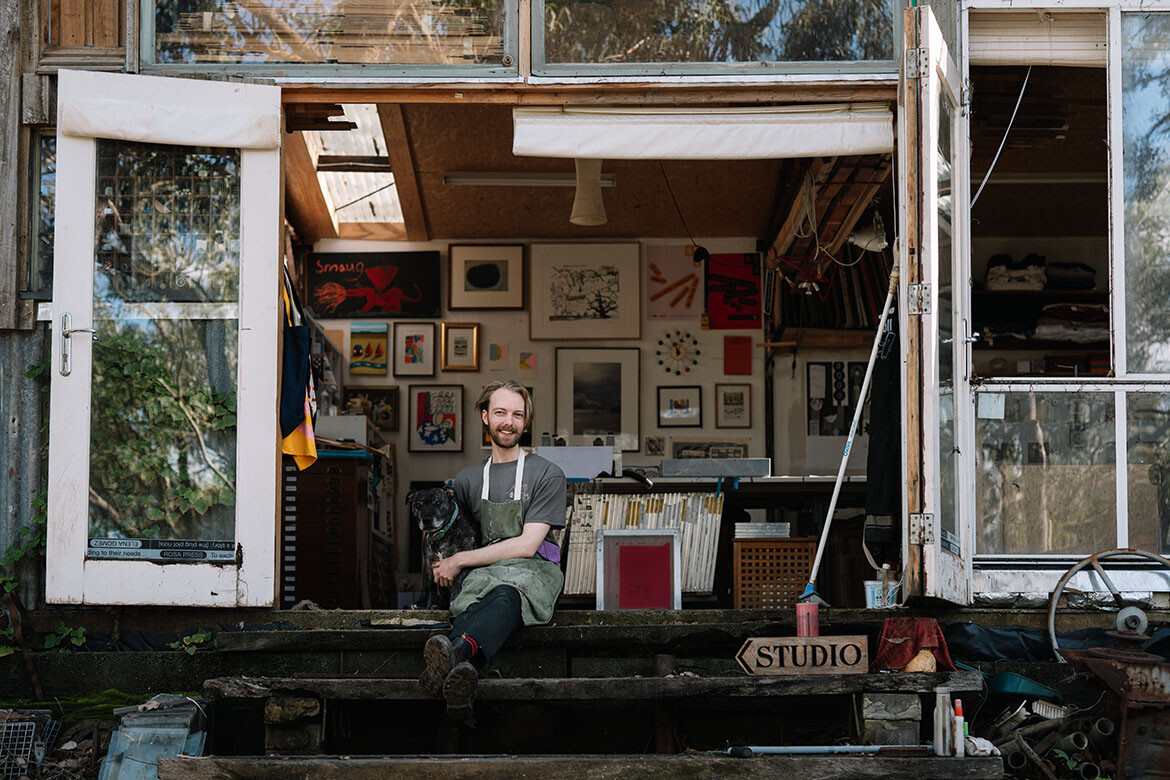Conceived and facilitated by Artek Halpern-Laurence, participants of Print Kitchen (running Friday 19 – Sunday 21 May) will enter the studio-come-trattoria to create their own etching, watch it be ‘cooked’ by a team of chefs operating the giant spinning wheel of the onsite etching press; and with the ding of a bell, collect their very own print to take home and enjoy.
Halpern-Laurence established the print studio Huge Mumma Spice Merchant at Warrandyte, North West of Melbourne after graduating from RMIT in 2016. Huge Mumma Spice Merchant hosts workshops and collaborations that demystify print processes and focus on printmaking’s ability to create connections between people by making art more shareable and accessible. Since establishing his practice his print portfolio has continued to grow with work being shown at Melbourne Now this year, and the upcoming Print Kitchen along with a good solid exhibiting portfolio.
We put some questions to Halpern-Laurence and learn more about his background and inspirations, and most importantly, what to expect at Print Kitchen as part of the NGV Art Book Fair.
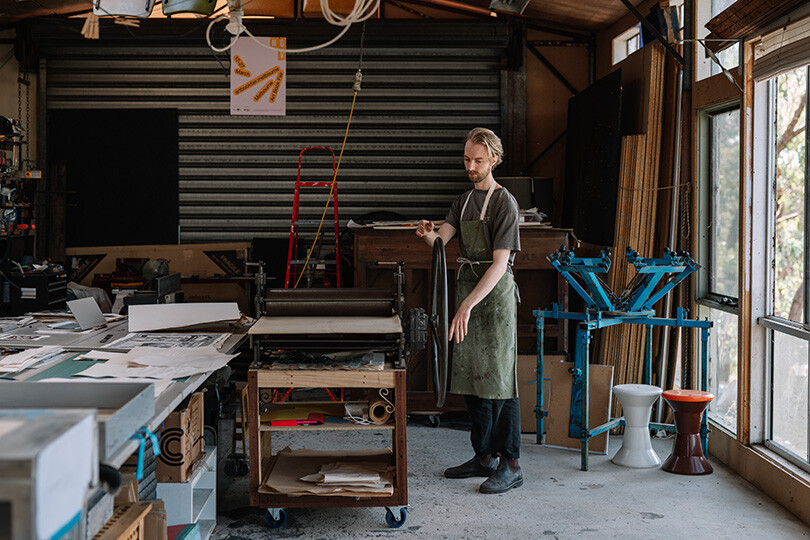
Growing up in a family of artists, how was creativity encouraged?
All sorts of ways. I have early memories of making little clay creatures in my grandma’s studio, sitting on top of mum’s sculptures, having an etching plate popped into my hands by my aunt and uncle and rummaging around in my dad’s metalworking studio. Creativity was always encouraged in that sort of way, but I think the most important aspect was just living amongst examples of creative, often self-employed, people doing what they do.
What drew you to printmaking?
For a long time as I was growing up, I was a huge nerd (still am). I was super into computers and games, building computers and that whole world. In the middle of high school, I was really inspired by one of the students a year or two above me who was an incredible photographer. I started taking photos and quickly got interested in that, and although I’d always been around art and making things, photography was the first time I really started focusing on art-making.
After high school, I started Fine Art at RMIT in which photography and printmaking were in the same discipline. I went on a bit of a roundabout ride through that course, switching between photography, sound and printmaking, but printmaking underpins a lot of the work I’m interested in and gives you the ability to make all sorts of things – t-shirts, posters, work on paper, packaging, books – and then share them with others. It makes art accessible and fun by being able to offer your work to others.
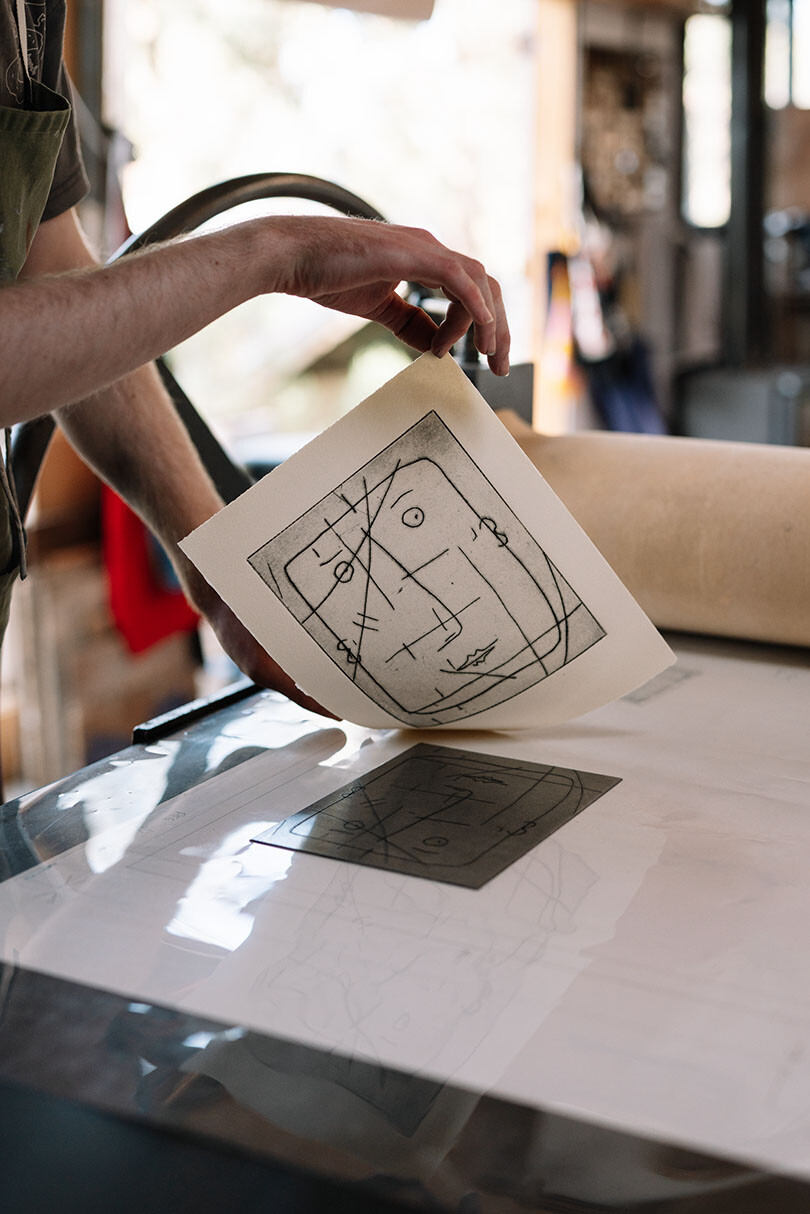
Can you tell us about Huge Mumma Spice Merchant? What motivated you to open a print studio?
Huge Mumma Spice Merchant is part studio, part alias, and part entity. It started in my final year of high school as an idea for my friends and me to collaborate on all sorts of creative things. I was doing photography, Raff Amor was illustrating and Cian Bennet and Dougal James were making music. For a long time “Huge Mumma Spice Merchant” was just a mysterious concept passed on through word-of-mouth and a few posters at our school, it was like folklore or myth.
The following year it all came together when we put on the Huge Mumma Spice Merchant: Huge Hoedown at Montsalvat. We had bands and animated projections in an exhibition in the Barn Gallery. At the same time, I was doing things at RMIT, so I screenprinted paste-up posters and t-shirts which all sold that night. It was a lot of fun, but the t-shirts and tote bags were accessible for us and our friends at the time, both financially and as usable or ‘utilitarian’ art. Whether other people viewed it as that or not I don’t know but I always tried to make t-shirts which would be special and valued.
After that I kept going with Huge Mumma, printing my own designs and taking them to markets around Melbourne – shoutout Rose St Artists Market. It was really all about being able to make things by hand and sharing them with people.
P.S. The name Huge Mumma Spice Merchant came from my good friend Cian Bennet who has an endless text note saved on his phone which contains literally hundreds (possibly thousands, and counting) of potential band names.
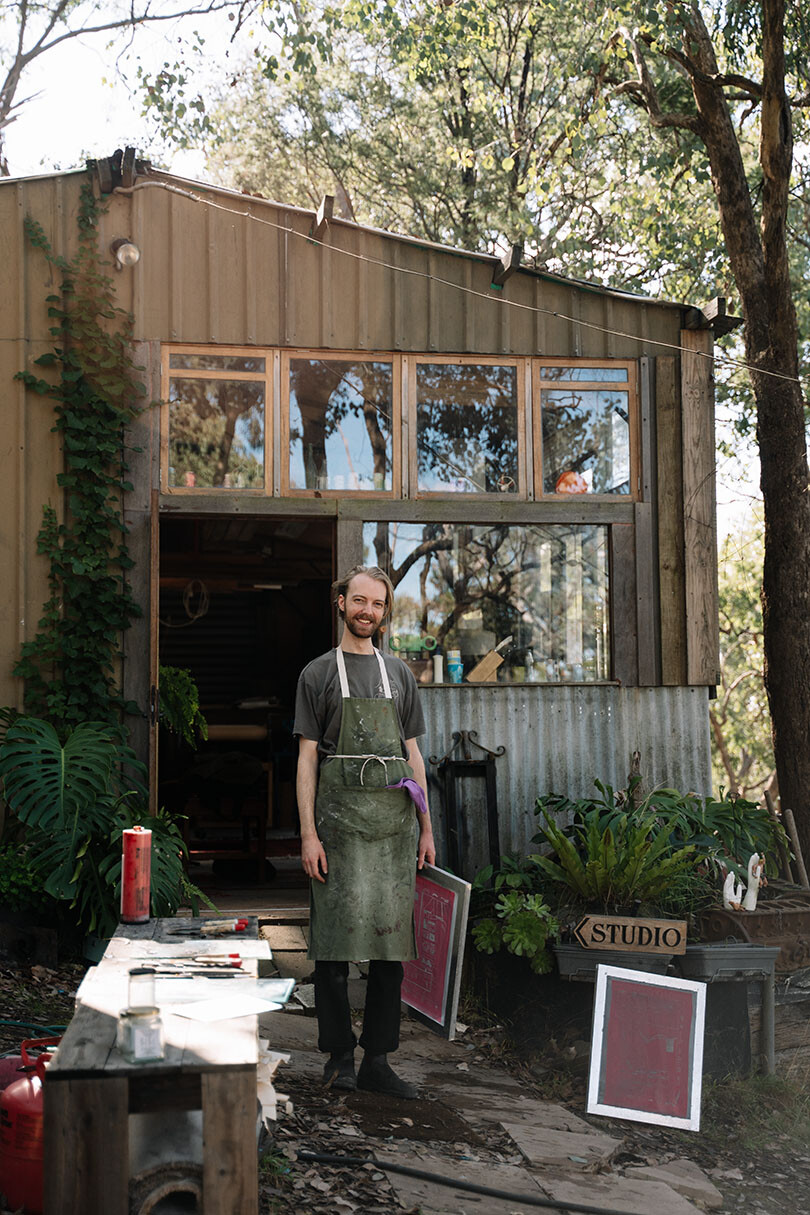
You work across a range of making techniques, how do they vary?
Printmaking is special in that it’s like collaborating with the process or equipment. Each technique has its own voice, style, strengths and limitations which throw you curveballs or steer you in different directions. Screenprinting is great for posters and t-shirts, but doesn’t give the nuance and intricacy of lithography. Etching is strong and robust but doesn’t give the immediacy or speed of a laser printer out of a bin out the back of Officeworks.
The thing that’s so exciting about all the mediums is that there are so many different directions to take each one. Etching for example is a really simple concept – you’re making grooves in a metal plate which hold ink – but there are so many ways you can make those grooves. You can use acis and hard wax to create sharp lines, soft wax and imprint your fingerprints, sugar solutions and boiling water to create painterly marks, even coffee and soap have different effects, or you can simply scratch directly with something sharp. There’s so much depth to explore.
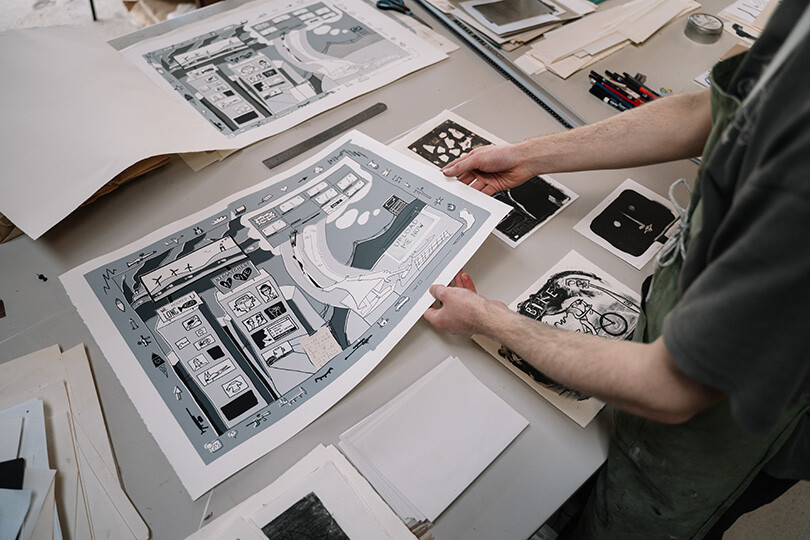
Can you share a bit about your idea and concept for Print Kitchen?
Almost all artists (especially printmakers) at one point or another have found themselves in the studio wearing an apron, mixing up ink with a knife or spatula while their plate heats up on the hotplate and wondered whether they should just go get a job in a pizza shop. Print Kitchen is that pizza shop.
It’s about taking all the parallels and shared tools between cooking and printmaking and creating a working studio from them. Visitors (diners) in the Kitchen take a seat and are given an etching plate along with a menu containing some classic print recipes. Using the materials provided they create something (anything!) and when finished, hand it over the counter to one of the chefs who will cook it up using an etching press and pack it into one of our very special pizza boxes which double as a frame for the print.
It’s part of the Melbourne Art Book Fair and it’s about giving visitors to the Fair a hands-on experience of the print technology which underpins all the books and art around them.
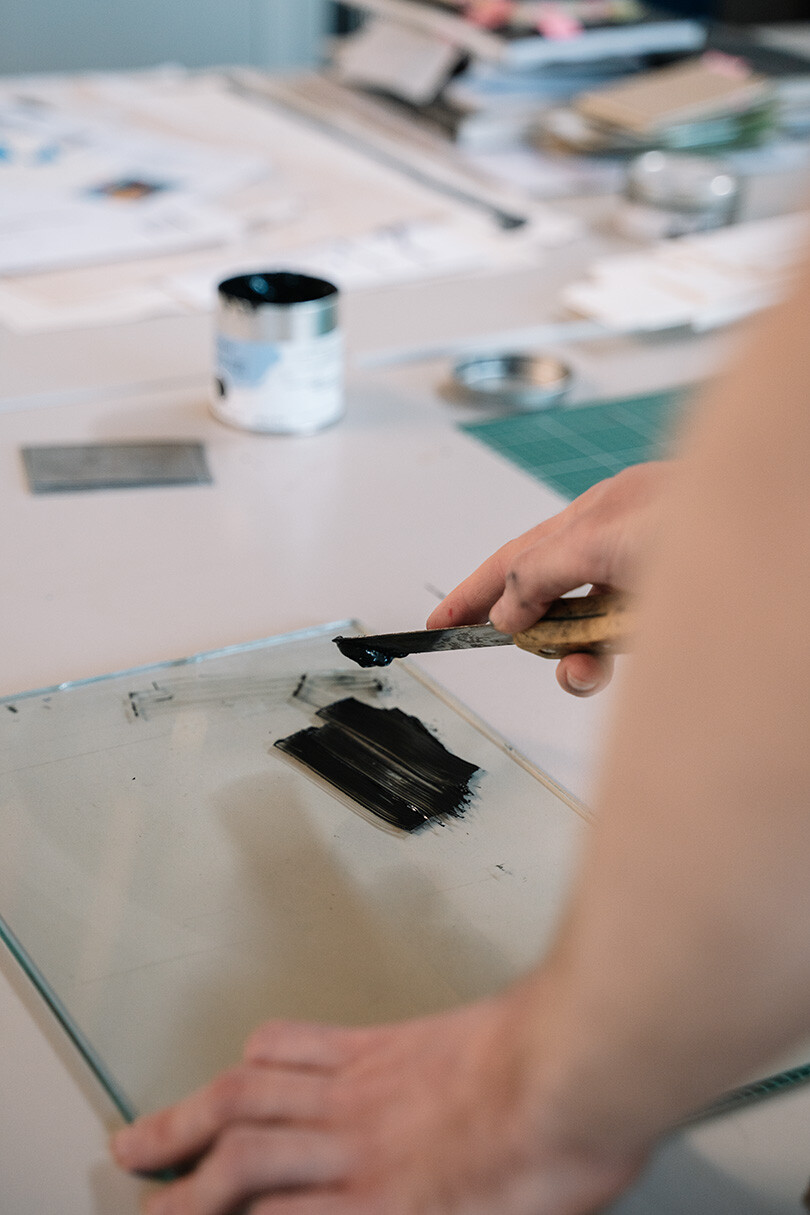
In what ways do you see a connection between printmaking and cooking?
One of the things that works so well with putting printmaking into this diner/chef relationship is that it mirrors the traditional relationship between artists and printmakers. Traditionally the artist and printmaker are two different people who work in collaboration to create an edition. Contemporary printmakers often take on both roles, as artists and technicians.
The installation really serves as a super accessible way for people to learn not only about the process of printmaking but also that relationship between artist and printer. Using symbols, devices and conventions which we’re all so used to in eating, cooking and dining, it gives a really natural way to communicate these ideas around printmaking.
Aside from all that, it’s just gonna be really fun and going to bring to life an idea that I hope many will relate to!
Get along to Print Kitchen, running from Friday 19 – Sunday 21 May as part of the Melbourne Art Book Fair.
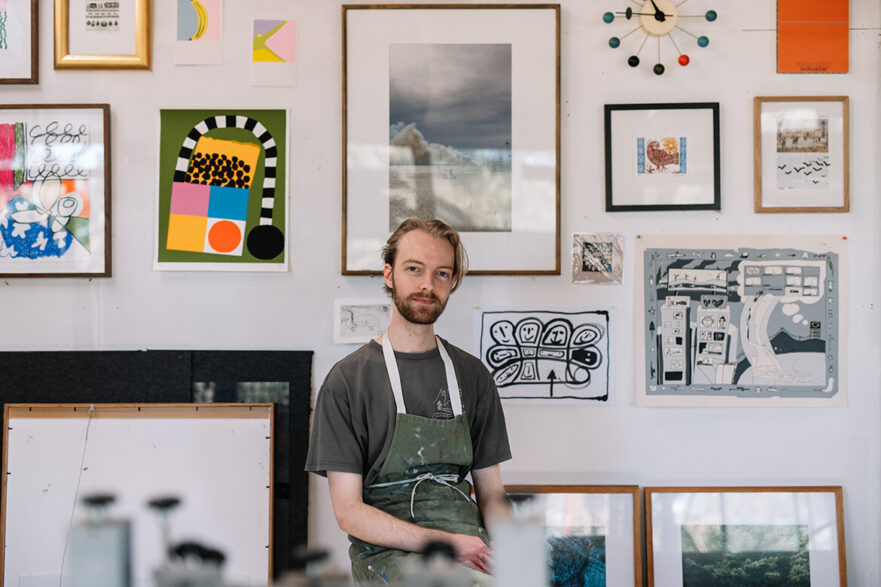
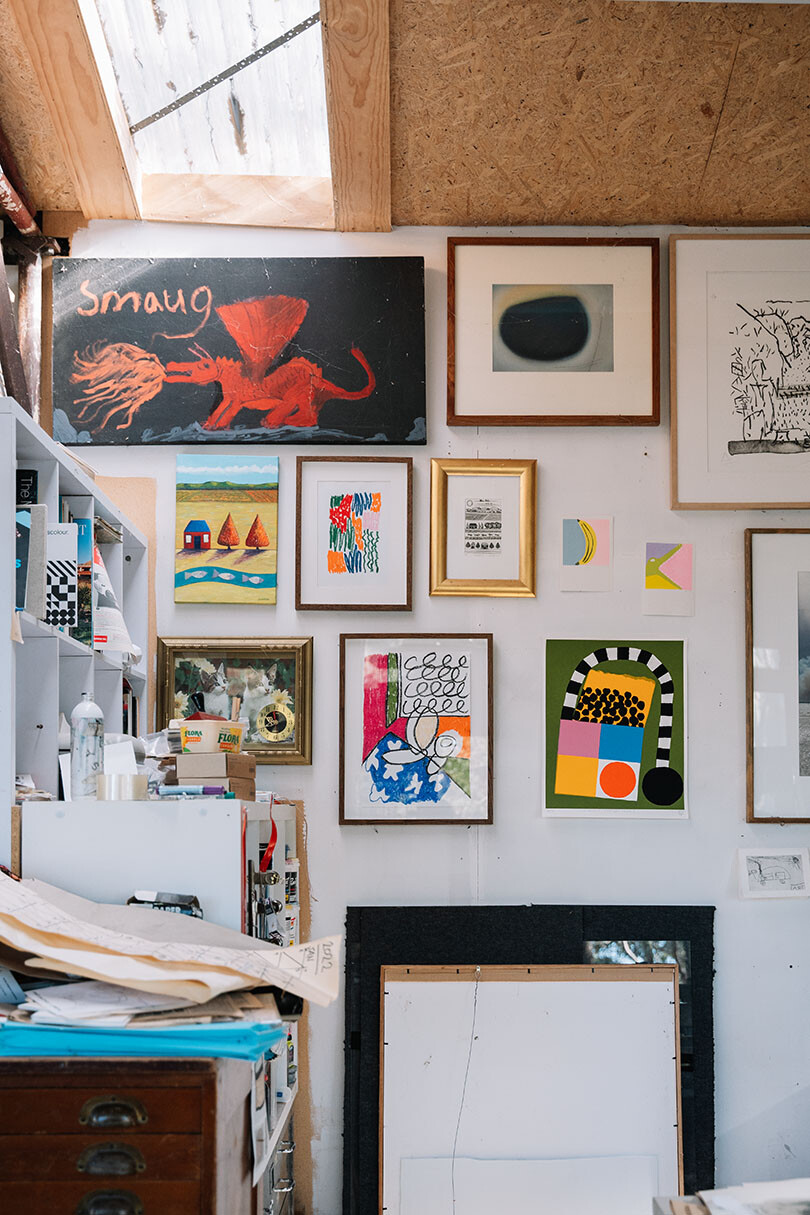
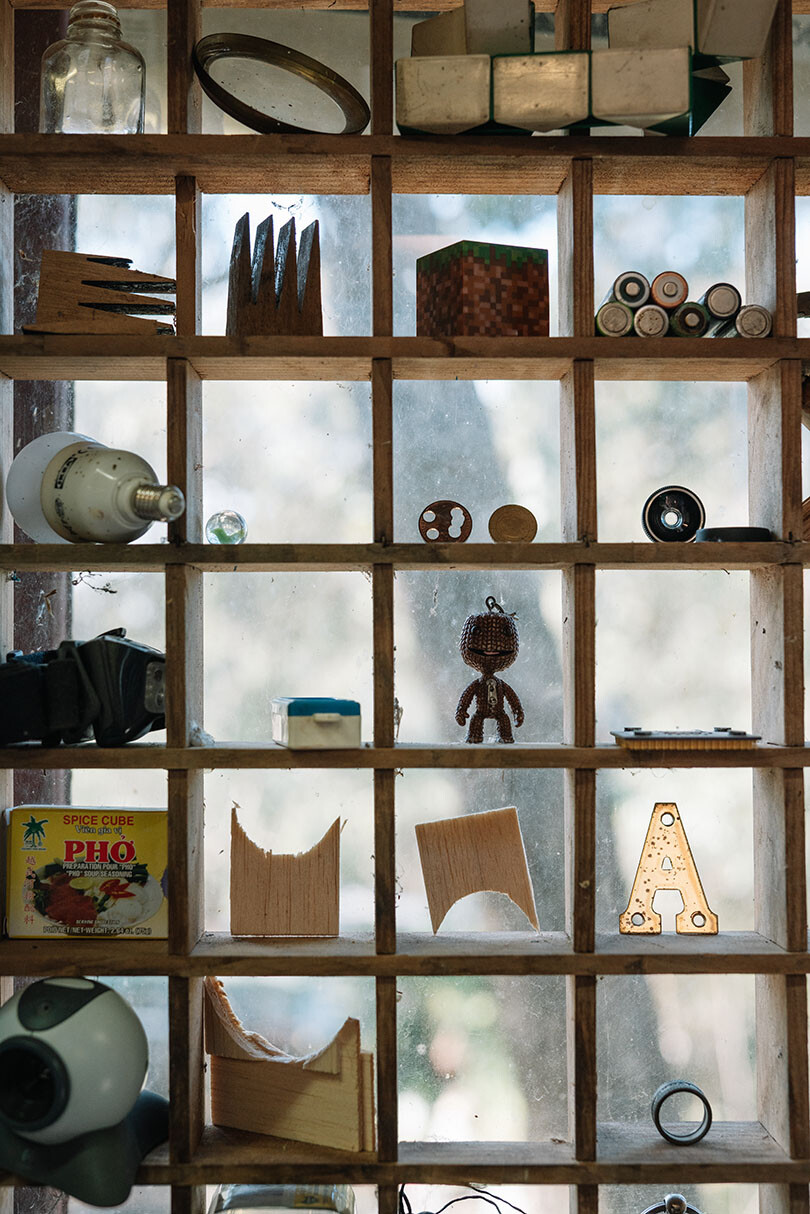
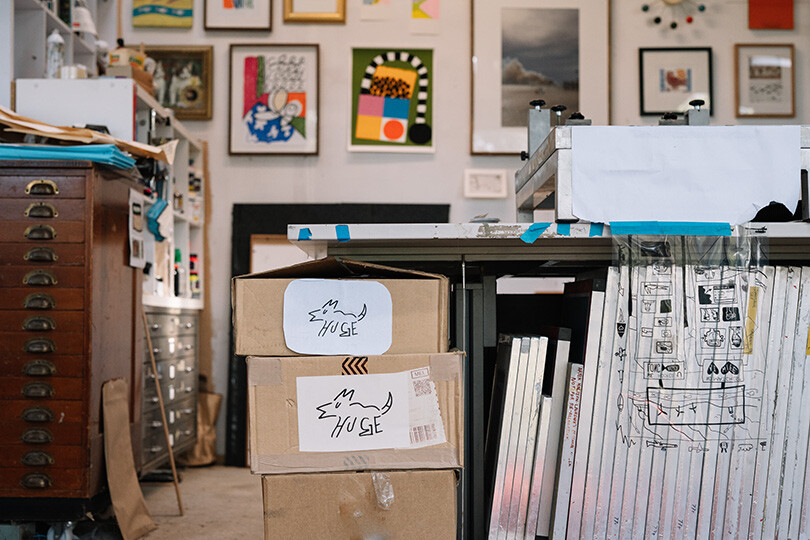
Huge Mumma Spice Merchant
hugemumma.com
Photography by Phoebe Powell
phoebepowellphotography.com

